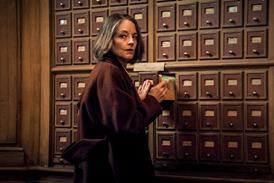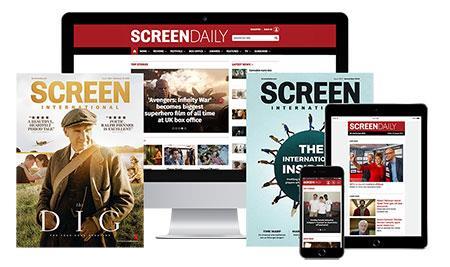
Auschwitz survivor Ryszard Horowitz, now aged 86, is in Cannes to support the launch of Picture From Auschwitz, a digital replica of the German Nazi concentration and extermination camp for use in film and television productions.
“Given the Museum does not allow any feature film crews into the camp, it’s a wonderful way to help more people to do their work and also to get interest in the story,” said Horowitz, rescued by Oskar Shindler and one of the youngest known survivors of the camp.

Horowitz went on to become an acclaimed photo composer, graphic designer and art director. He created the poster for the 1995 Cannes Film Festival.
Picture From Auschwitz is a certified 1:1 digital replica of the Auschwitz I part of the Auschwitz-Birkenau complex, using advanced spatial scanning tools and based on 18,000 high resolution images specially taken of the camp.
Overseen by virtual production and AI film expert Maciej Żemojcin, the project has been backed by the Auschwitz-Birkenau Museum and Memorial, the Auschwitz-Birkenau Foundation and partners from the European film industry. Licensing fees from the project will support the Memorial.
A version of the digital replica is available in classic post production workflow and Unreal Engine, allowing filmmakers to recreate the camp within a virtual production studio. Actors can be filmed in front of LED walls displaying the digital replica of Auschwitz, blending seamlessly into the camp’s environment thanks to real-time camera tracking technology.
The digital replica can also be used for filmmakers using green screens, with video renders then added in post production.
Alternatively, the digital replica can also be used as a highly accurate reference point for art departments looking to create physical set builds for films or TV dramas featuring the Auschwitz camp.
The Memorial’s historians will consult with filmmakers to ensure their stories are based on real facts before giving them access to the technology. Wojciech Soczewica, CEO, the Auschwitz-Birkenau Foundation, described the consultation process as a “dialogue that has immense values for filmmakers” in terms of accuracy and ethics of filming projects about the camp. The Foundation is responsible for licencing the digital replica to film productions.
One of the reasons for launching the digital replica is to offer filmmakers an officially approved tool for authenticated and ethical storytelling, in part to help combat denial and distortion at a time when misinformation is on the rise.

The Memorial regularly assists filmmakers wanting to make documentary films about Auschwitz-Birkenau, but feature films and TV dramas are not allowed to be filmed within its grounds.
Even Steven Spielberg’s seminal 1993 feature Schindler’s List had to construct a replica of the camp, basing his set builds of the Birkenau crematorium and gas chambers on historical documentary footage as they were destroyed during the war. More recently, Jonathan Glazer’s The Zone Of Interest filmed just outside.
“It is going to take a little time before we see how this thing works,” said Horowitz. “It depends on who does it and how the actors can find their way and their meaning [with it].
Next steps in the project include completing the digital interiors of Auschwitz I, and the exteriors and interiors of Auschwitz II-Birkenau camp. The Foundation is seeking to raise €1.5m to help complete the project.
Every element of the space – starting from the “Arbeit Macht Frei” gate, fence posts, buildings with every brick or roof tile – is being meticulously documented. For areas which were destroyed during or after the war, the digital replica will be based on the Nazi’s detailed plans of the camp. The Foundation is seeking to raise €1.5m to help complete the project.
























No comments yet